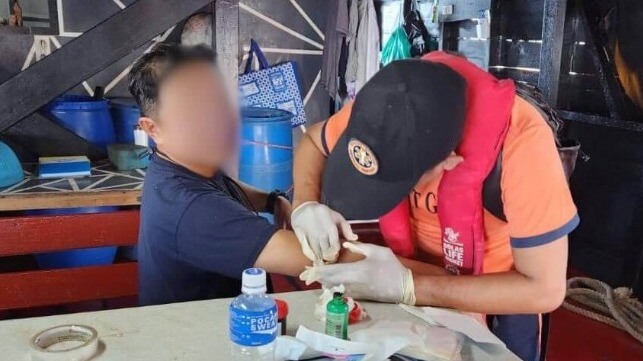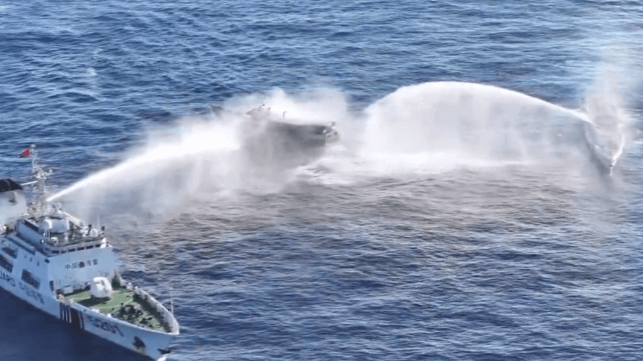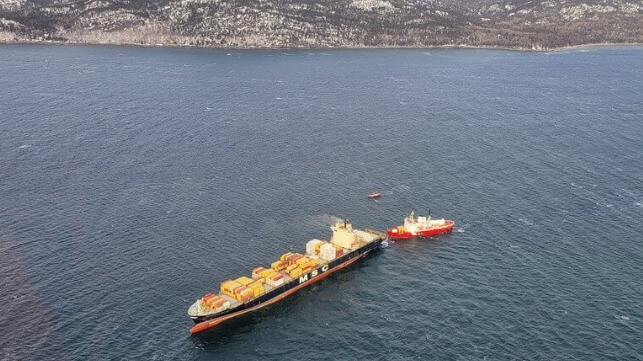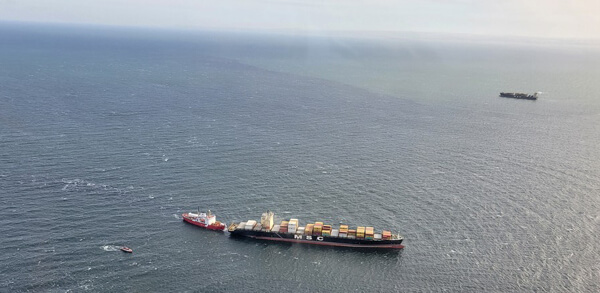Three Dead, Four Injured in Houthi Missile Attack on a Bulker
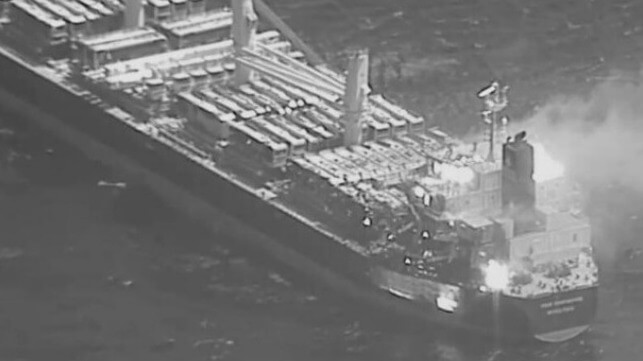
A Barbados-flagged, Greek-managed bulker was attacked by Yemen's Houthi rebels on Wednesday, causing the first crew casualties since the group began attacking commercial shipping nearly five months ago. Several crewmembers are reported to have been killed in the attack and others badly injured after the vessel, the True Confidence, caught fire. Coalition forces responded to provide assistance and assess the full extent of the situation.
The British Embassy posted a message saying, “At least two innocent sailors died. This was the sad and predictable result of the Houthis' reckless missile launches on international shipping. They must stop. Our deepest condolences are with the families of those who died and those who were injured.”
Later in the day, U.S. Central Command said that three crewmembers have died and four were injured, of which three are in critical condition. The now-abandoned ship sustained significant damage.
The 50,500 dwt bulker was traveling from China with a stop in Singapore bound for Jeddah, Saudi Arabia when it was attacked on Wednesday morning approximately 50 nautical miles southwest of Aden, Yemen. There were reports of a loud explosion with unconfirmed statements that the vessel was engulfed in a fire and drifting after the crew took to the lifeboats. The picture released by CENTCOM appears to show the fire in the vessel's accommodation area and bridge.

The vessel’s manager is reporting that there were 20 crewmembers, including Indians, Vietnamese, and Philippine nationals as well as three security guards on the ship. They are saying contact was lost with the crew while both Reuters and Associated Press quoting unnamed U.S. officials saying causalities are likely. Earlier reports said at least three crewmembers were believed missing while four were reported to have suffered severe burns. While other crews have suffered minor injuries, these are the first casualties and severe injuries since the attacks began in November 2023.
In a statement taking credit for the attack, a Houthi spokesperson said, “The targeting operation came after the ship's crew rejected warning messages from the Yemeni naval forces.” Yahya Saree wrote on X that ships “must respond to calls from the Yemeni naval forces, and all crews of the targeted ships must quickly leave after the first attack.”
The United Kingdom Maritime Trade Organizations confirmed it had reports that the True Confidence was being hailed for at least 30 minutes by the so-called “Yemeni navy.”
The Houthis are claiming the vessel was owned by U.S. interest, identifying Oaktree Capital Management, but the vessel’s managers are refuting any connections to the U.S. The Equasis database shows the ship which was built in 2011 with its previous owner from 2021 until February 2024 registered as OCM Maritime, but now it is reported owned by True Confidence Shipping.
Many bulkers have been reported to be joining the growing number of vessels diverted away from the Red Sea region. The owners are saying this vessel was transporting steel products and trucks to Saudi Arabia.
IMO Secretary-General Arsenio Dominguez issued a statement later in the day expressing the condolences of the IMO. "Innocent seafarers should never become collateral victims," he said. "I once again call for collective action to fortify the safety of those who serve at sea. We all need to do more to protect seafarers."
U.S. Central Command reported several hours earlier that the USS Carney identified one anti-ship ballistic missile and three one-way attack unmanned aerial systems launched by the Houthi toward the destroyer. The U.S. forces downed the attacks with no injuries or damage to the ship. Later in the day, CENTCOM forces also destroyed three anti-ship missiles and three unmanned surface vessels (USV).
In its end of day update, CENTCOM said that the attack on the True Confidence was the fifth anti-ship ballistic missile fired by Houthis in the last two days. Two of these ASBMs hit two merchant ships - M/V MSC Sky II and M/V True Confidence - and one ASBM was shot down by USS Carney.
Report: MSC Boxship Catches Fire After Houthi Missile Strike

[Updated] Yemen's Houthi rebels have hit another merchant ship and sparked a fire with a missile strike in the Gulf of Aden, according to two UK security consultancies.
Ambrey and Vanguard Tech both report that the sub-Panamax boxship MSC Sky II has been hit by a missile and has caught fire.
The master of MSC Sky II reports that the attack involved two missiles: the first went into the water off the vessel's port quarter, and the second reportedly struck the ship's accommodations block. No injuries were reported, but the impact started a fire, and the crew were engaged in firefighting as of Monday afternoon.
In an update late in the day, U.S. Central Command reported that the MSC Sky did not request assistance and continued on its voyage.
MSC is owned and operated by the Aponte family out of its headquarters in Switzerland. However, one of the firm's top shareholders was born in what is now the state of Israel. Some analysts suggest that Yemen's Houthi rebels have identified this connection and are targeting MSC vessels because of the affiliation: the Houthis assert that their campaign against shipping in the Red Sea is aimed at disrupting Israeli commerce and applying political pressure to halt Israel's operation in Gaza.
MSC vessels have been targeted multiple times since the beginning of Houthi hostilities last fall. Houthi militants attacked MSC Palatium III with a ballistic missile in mid-December; MSC United VIII was attacked in the Red Sea about 10 days later; and MSC Silver II was targeted last month. None of these previous attacks were successful, though the Houthis have caused considerable harm to other owners' vessels.
MSC had previously indicated that it would suspend Red Sea operations due to the security risk.
